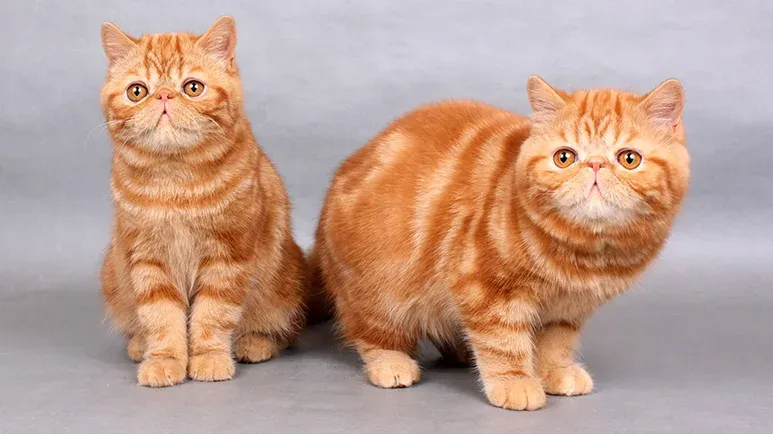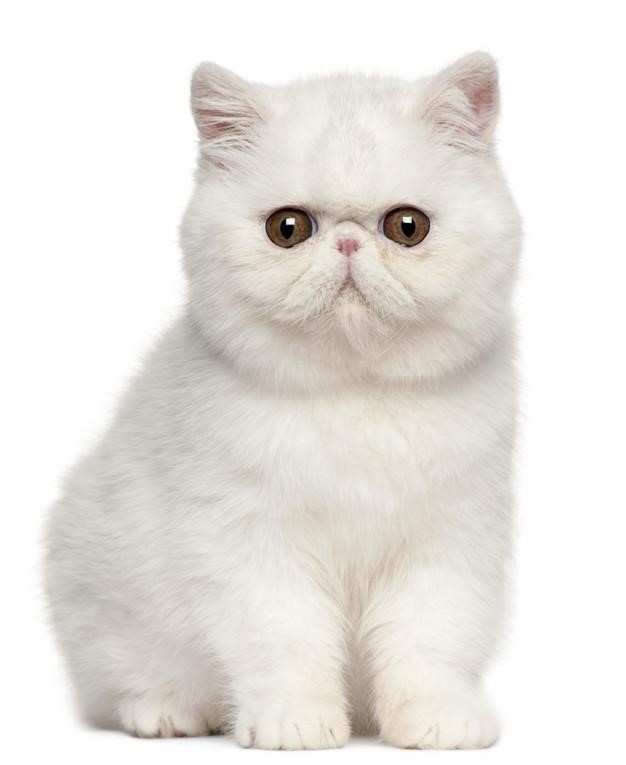Exotic Shorthair cats are a delightful and affectionate breed known for their charming personalities and striking appearance. Often referred to as the “lazy man’s Persian,” these cats possess the same endearing features as Persians but come with the added benefit of a short, manageable coat. This article aims to provide a comprehensive overview of Exotic Shorthair cats, covering their history, physical characteristics, temperament, care requirements, and more.

History and Origin
The Exotic Shorthair breed originated in the United States during the late 1950s and early 1960s. Breeders sought to create a short-haired version of the Persian cat, leading to the initial crosses between American Shorthairs and Persians. The goal was to retain the Persian’s beautiful coat colors and expressive eyes while achieving a shorter coat that required less grooming. Over time, the breed was recognized by various cat associations, including the Cat Fanciers’ Association (CFA) in 1966 and The International Cat Association (TICA) in 1979. The Exotic Shorthair has since gained popularity for its unique combination of Persian features and lower maintenance needs.
Physical Characteristics
Exotic Shorthairs are known for their distinctive features, which include:
- Face and Eyes: They have a round face with a short, flat nose and large, expressive eyes that can be copper or blue, depending on the coat color.
- Coat and Color Varieties: Their coat is dense, plush, and short, coming in a wide range of colors and patterns, including solid, tabby, bicolor, and colorpoint.
- Body Structure and Size: Exotic Shorthairs are medium to large in size, with a sturdy and compact body. They typically weigh between 7 to 15 pounds.
In comparison to their Persian relatives, Exotic Shorthairs maintain the same physical standards but with a significantly shorter coat, making them easier to groom.

Personality and Temperament
Exotic Shorthairs are known for their gentle and affectionate nature. They are typically calm and laid-back, making them excellent companions for families, singles, and seniors alike. These cats enjoy being around people and often follow their owners around the house, seeking attention and companionship.
They are generally good with children and other pets, although they may initially be cautious around new visitors. With time, they warm up and can become playful and interactive. Their soft voices and affectionate demeanor contribute to their reputation as loving companions.
Grooming and Maintenance
Exotic Shorthairs have relatively low grooming needs compared to their long-haired counterparts. Regular brushing, ideally once or twice a week, is recommended to remove loose hair and prevent matting. During shedding seasons, more frequent grooming may be necessary.
Additionally, owners should regularly check their cat’s ears for debris and clean their faces to prevent tear staining. Dental hygiene is also important, so brushing their teeth with cat-safe toothpaste should be part of their grooming routine.

Health and Care
While Exotic Shorthairs are generally healthy, they can be prone to certain hereditary health issues, such as polycystic kidney disease and respiratory problems due to their brachycephalic (flat-faced) structure. Regular veterinary check-ups and vaccinations are crucial to monitor their health and prevent potential issues.
Preventive measures include maintaining a healthy diet, providing ample exercise, and being vigilant about any changes in behavior or health. Owners should also be aware of the potential for separation anxiety, as these cats thrive on companionship and may become distressed if left alone for long periods.
Nutrition and Diet
A well-balanced diet is essential for the health of Exotic Shorthairs. It is recommended to provide high-quality commercial cat food formulated for their age and activity level. Owners should consult with their veterinarian to tailor their cat’s diet appropriately.
Common dietary preferences include wet food, which can help with hydration, and dry kibble for dental health. It’s important to avoid overfeeding and to monitor for any food allergies or sensitivities.

Training and Socialization
Training an Exotic Shorthair is generally straightforward due to their intelligent and eager-to-please nature. Basic commands and litter box training can be accomplished with positive reinforcement techniques.
Socialization is also important, especially for kittens. Exposing them to various environments, people, and other pets can help them develop into well-adjusted adults. Owners should handle behavioral issues with patience and consistency, using rewards to encourage good behavior.
Finding and Choosing an Exotic Shorthair
When looking to adopt or purchase an Exotic Shorthair, it’s crucial to find a reputable breeder or shelter. Prospective owners should look for breeders who prioritize health testing and responsible breeding practices.
In addition, potential owners should assess the cat’s health, temperament, and compatibility with their lifestyle. Adoption can be a rewarding option, providing a loving home to a cat in need, while buying from a breeder may offer specific traits and lineage.
Exotic Shorthair Cats in Popular Culture
Exotic Shorthairs have made appearances in various media, often depicted as charming and lovable companions. Their unique looks and personalities have led to their portrayal in films, cartoons, and online platforms. Some famous Exotic Shorthair cats have garnered significant social media followings, showcasing their adorable antics and endearing nature.

Pros and Cons of Owning an Exotic Shorthair
Advantages:
- Affectionate and gentle temperament
- Lower grooming requirements compared to long-haired breeds
- Good compatibility with families and other pets
Challenges:
- Potential health issues due to breeding
- Need for regular companionship to avoid separation anxiety
- Possible dietary sensitivities that require careful management.
Conclusion
Exotic Shorthair cats are a wonderful breed for those seeking a loving and low-maintenance companion. Their charming personalities, beautiful appearance, and affectionate nature make them ideal pets for various households. By understanding their needs and characteristics, potential owners can ensure a fulfilling and happy relationship with their Exotic Shorthair.
FAQs
What is the difference between an Exotic Shorthair and a Persian Cat?
The primary difference lies in their coat length; Exotic Shorthairs have short, dense coats, while Persians have long, luxurious fur. Both breeds share similar physical traits and temperaments.
How much exercise does an Exotic Shorthair need?
Exotic Shorthairs are moderately active and enjoy playtime. Daily interactive play sessions and toys can help keep them physically and mentally stimulated.
Are Exotic Shorthairs good with children?
Yes, they are known for their gentle and affectionate nature, making them suitable companions for families with children.
What are the best grooming practices for Exotic Shorthairs?
Regular brushing (once or twice a week) is recommended to manage shedding and maintain coat health. Additionally, regular ear cleaning and dental care are essential for their overall well-being.
